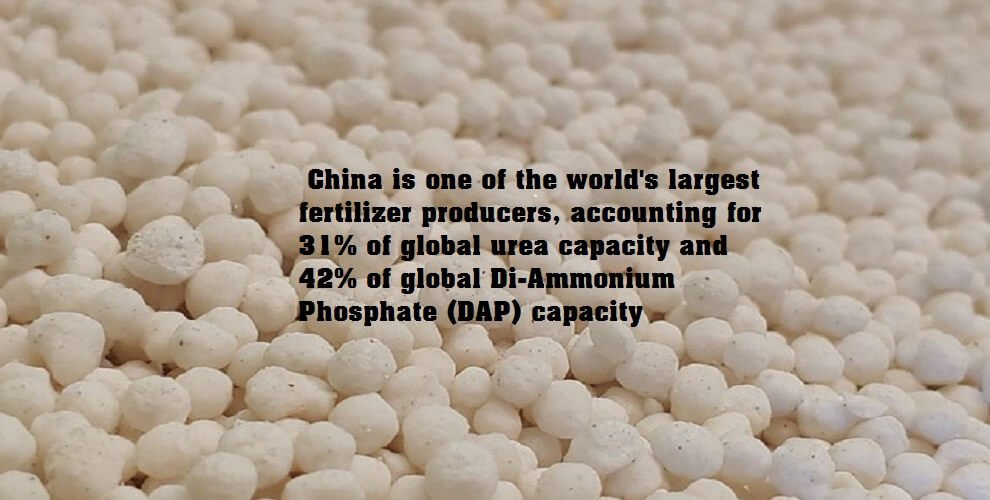The Chinese government’s decision to suspend chemical fertilizer exports may put upward pressure on global fertilizer prices, which are already in high demand in the global market, according to rating agency ICRA Limited (formerly known as ‘Investment Information and Credit Rating Agency of India Limited’) on Monday.
India’s neighbor, China is one of the world’s largest fertilizer producers, accounting for 31% of global urea capacity and 42% of global Di-Ammonium Phosphate (DAP) capacity.
Also Read: China Farmers abandoning other crops in favour of maize due to high profit margins
China has decided to suspend Chinese fertilizer exports in order to meet vigorous domestic demand, despite rising domestic prices caused by limited supplies and rising energy costs.
According to Sabyasachi Majumdar, Group Head & Senior Vice-President at ICRA, China currently accounting for 29% and 27% of India’s urea and DAP imports, respectively. In the previous fiscal year, China exported 5.46 million tonnes (mt) of urea and 5.48 MT of DAP, accounting for 11% and 32% of international trade, respectively.
The current trend is expected to continue
China’s decision to suspend exports will put pressure on already high prices in global markets due to limited supplies. Previously, we expected international prices to begin to moderate by the end of H1 FY22 (First Half of Fiscal Year); however, with the current development, prices are expected to remain stable through the rabi season,’ Majumdar said in a statement. This would imply that, with rising global prices, currency depreciation in recent months, and natural gas prices toning up, the fertilizer subsidy budget could be strained again by the end of FY22, he stated.
‘At current prices, the rating agency ICRA Limited expects the subsidy required to be around 100K – 110K crore, with volumes expected to remain flat or grow marginally in FY22. The fertilizer subsidy allocation currently stands at around 94,275 crores,’ Majumdar said, adding that the agency expects the government to make an additional allocation of 10,000-15,000 crore towards fertilizer subsidy in the H2 FY21 (Second Half of Fiscal Year).
Indian prerequisites
Because domestic production is limited, the Indian fertilizer industry relies on imports to meet domestic demand.
Also Read: Fertiliser Ministry increased purchasing limit for subsidized fertilizers
In response to a question in the Rajya Sabha last week, Mansukh Mandaviya, Minister for Fertilisers and Chemicals, stated that the country would require approximately 17.75 mt of urea, 6.52 mt of DAP, 2.02 mt of MOP, and approximately 6.19 mt of NPKS fertilizers during the current Kharif season.


















Add Comment